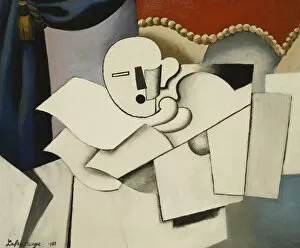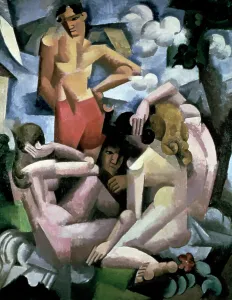Roger De La Fresnaye Collection
Roger de la Fresnaye was a French artist known for his diverse range of works, including sculptures, paintings, and drawings
All Professionally Made to Order for Quick Shipping
Roger de la Fresnaye was a French artist known for his diverse range of works, including sculptures, paintings, and drawings. One of his notable pieces is the "Large Nude; Grand Nu, " created in 1949 as a bronze sculpture. This artwork showcases de la Fresnaye's mastery in capturing the human form with grace and elegance. In another work titled "Man Writing: Study for Paludes; Homme Ecrivant: Etude pour Paludes, " de la Fresnaye explores the theme of creativity and introspection. The painting depicts a man engrossed in writing, symbolizing the artist's own process of creation. "Castor and Pollux, " an oil on canvas piece from 1922, reveals de la Fresnaye's fascination with mythology. The painting portrays the twin brothers Castor and Pollux from Greek mythology, highlighting their bond as well as their contrasting personalities. "The Clown; Le Pierrot" is another captivating oil on canvas artwork by de la Fresnaye. Created in 1922, it showcases a melancholic clown figure known as Pierrot. Through this piece, the artist delves into themes of sadness and introspection within the realm of performance art. De la Fresnaye also explored various mediums such as watercolor and pencil on tracing paper in his work titled "Study for Paludes. " Created between 1917-1920, this study exemplifies his meticulous approach to composition and form. "The Italian Girl" captures a three-quarter-length portrait looking to the right. This painting demonstrates de la Fresnaye's ability to capture individuality through portraiture while showcasing his skillful use of color and light. In "Man in the Country: Study for Paludes, " we see an exploration of landscape alongside human presence—a recurring theme throughout many of de la Fresnaye's works—highlighting our connection with nature.










